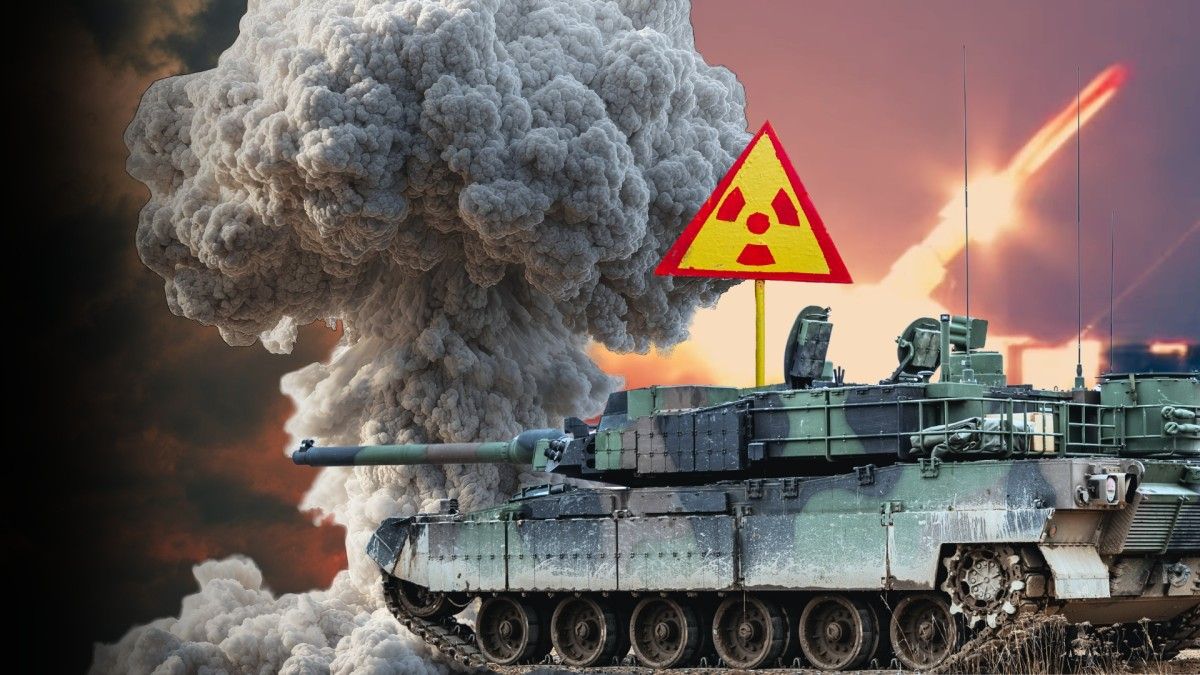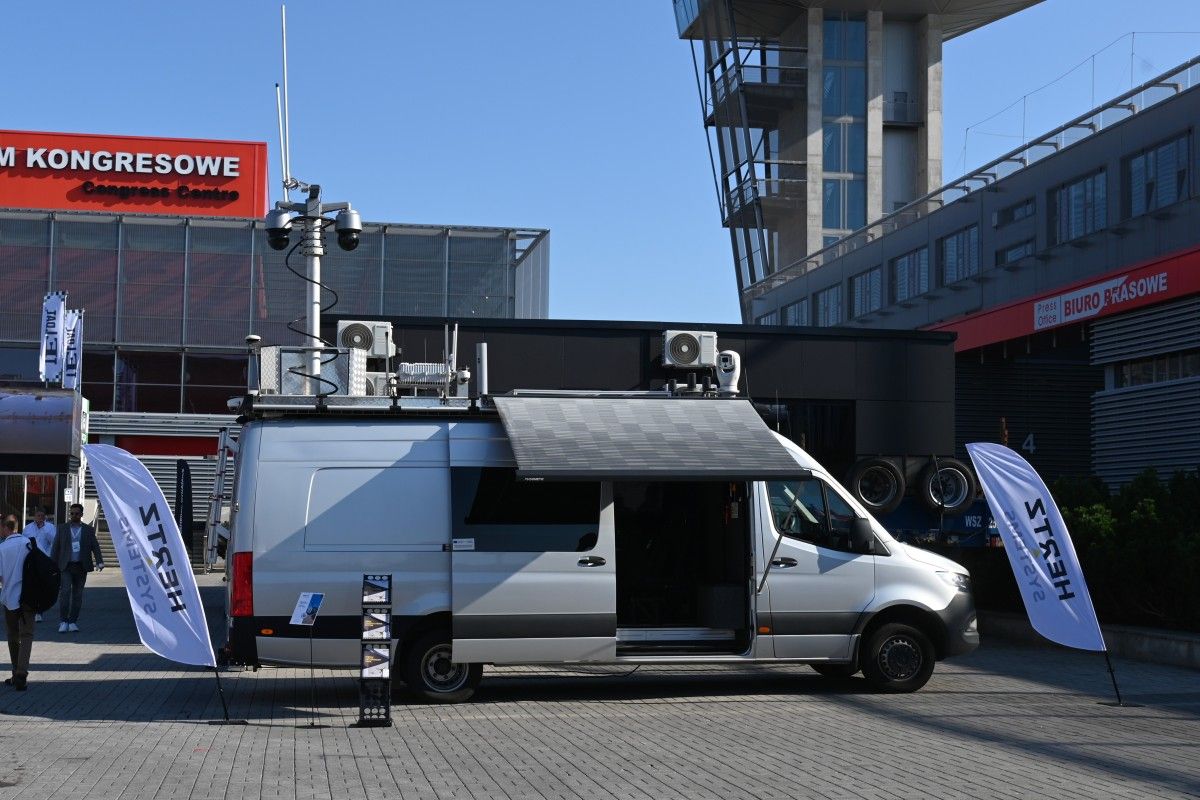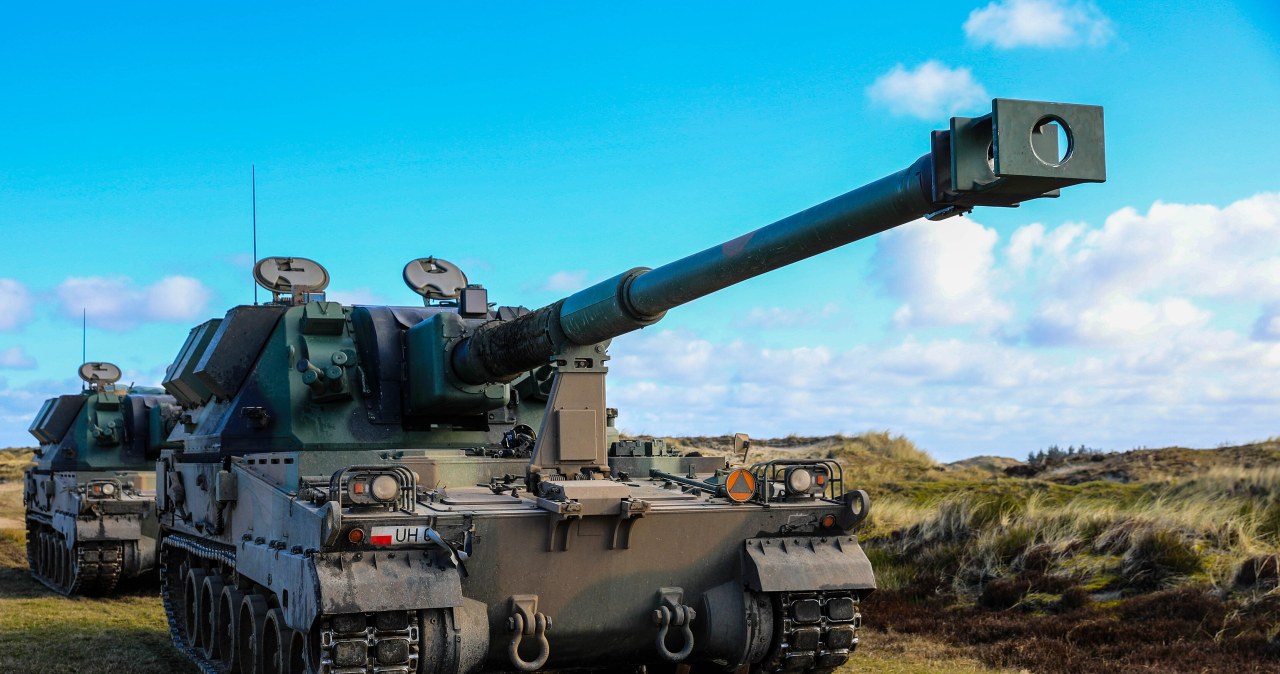"At Falaise the Germans were closed as in a bottle, and you were a cork for this bottle," emphasized British Marshal Bernard Law Montgomery, addressing Poles. It was thanks to the determination of General Stanislaw Maczek's soldiers that the Allies won 1 of the most crucial battles on the Western Front.
Gen. Maczek (right) and soldiers of the 1st Armoured Division.
They left the camp in Bayeux under cover of night from 7 to 8 August 1944. A fewer hours later, they reached Caen. Tank columns were now rolling among the ruins and with slow extinguishing debris. In fresh days, the city has become an arena of dense fighting and has mostly been turned into a mountain. "In the air there was a suffocating odor of burning. From all sides, she struck artillery, throwing thousands of missiles at German positions. The roar of the cannons was tearing the air,” says historian Jadwig Hope. For the soldiers of the 1st Armoured Division, the sight of Caen may have been a grim announcement of what is ahead of them in the coming hours. Yet they moved forward with enthusiasm. In the heads of many of them there were most likely inactive echoes of the speech, which was given before the departure by General Stanisław Maczek. ‘Soldiers [...]. erstwhile we left France in June 1940, our ranks were thinned, our future unknown and we were powerless. Today, after 4 years on British soil, we begin the war march to Poland. We're arrogant due to the fact that for 5 years we haven't broken down, we haven't laid down our weapons. On the contrary, we created an armored division, the first always of our army [...]. We're strong due to the fact that we have the best equipment in our division that allies can handle. But in addition to that, we bring into conflict something that Germany does not have. We bring in tremendous moral strength. We bring full awareness that we are fighting for the right origin and that the first radiance of triumph can be seen before us," said Gen. Maczek.
Polish tankers, whose last years have mostly passed on training and securing east Scotland from a possible German landing, now yet entered the game. And as their commander announced, they were going to bill Germany for the full war. For Warsaw, for Westerplatte, for undefeated armies of civilians killed in raids, murdered in prisons and camps. For all Polish life.
Tigers and Cromwelle
In early June, tens of thousands of Allied soldiers landed on Normandy beaches. Coastal defence was scattered like a home of cards, and the Germans were in reverse. But they rapidly recovered from the first shock and began to put the enemy under hard conditions. In France, fierce fighting continued, while more forces were being pushed through the La Manche Canal. Among them, the 1st Armoured Division – a tactical union with more than 16,000 soldiers and nearly 400 Cromwell, Crusader and Sherman tanks. The hatchets were assigned to the 1st Canadian Army. Together, they were to gain elevations in the area of the city of Falaise, connect with the coming from the south Americans and close the German Army Group B in the lap. However, this 1 was well prepared to defy the attack.
"In front of the front of the 2nd Canadian enemy corps, the enemy expanded 2 defensive belts. The first is simply a front position with a half-circle shape, covering between 5 and 7 kilometres in south and east of Caen. In addition, the main position, extended southwards and distanced from the front position by about 8-9 kilometres. The second German belt of defence stretched along the River Laison and the forest Quesnay" – Jadwig Nadziej details. The Germans had at their disposal, among others, 2 infantry divisions and an armored division, equipped with Tigers and Panthers. True, the first line of defence broke as a consequence of the Allied attack, but the second 1 was almost intact. In addition, American bombers, which were expected to support the offensive, mistakenly besides bombed... Poles. "Many tanks are about to burst into flames. Crews jump out and hide in the grain. Increasingly darker than smoke, it is hard even to admit whether it is burning tanks of the Polish division or enemy. The commander of the Rtm squadron Marian Piwonski was badly wounded and ended his life that day. The wounded are Lt. Świętkowski and Lt. Jeliński" – reported Polish war correspondent Marian Walentynowicz.
But after years, Gen. Maczek hit his chest. "It cost us besides much for this first period of action, besides tiny a direct success [...]", he wrote in post-war memories. "This was indeed the first conflict of the 1st Polish armored division, so we had no experience of fighting the armored division from the commander of the division to the last shooter and the last one. This is the experience that can be gained in the field of combat and only for ourselves in person.” Fortunately, the next fewer days have been more successful. The Poles, alongside the Canadians, labored to push forward, at all minute approaching the goal.
Cromwell Tank VII Staff Squadron. Top left: Gen. Stanisław Maczek, captain of T. Wysocki. photograph by NAC
Catch the bull by the horns
On 14 August, the machos yet broke the second line of defence and reached the Laison River. US Army forces in a consecutive line were only 30 km away. The Germans realized that they could be surrounded any minute. They had a imagination of defeat. So they decided to retreat their forces to the east as shortly as possible. Meanwhile, the gene. The poppy heard fresh dispositions – it is essential to cut the corridor which the German troops escape as shortly as possible. So the armored tails turned south.
Meanwhile, among Polish troops, fatigue grew. Jadwiga Hopea: “August 1944 was sunny and hot in Normandy. The soldiers were very dense with helmets on their heads, feet in dense shoes were unmercifully burning, and clothing was sticking to the body. The heated motor vehicles burned at any touch. Tank and car crews, then flooded and intoxicated with engine exhausts, with the hatch flaps closed, lasted with large difficulty on the stations. The clouds of dust and dust were floating in the air, painfully biting into the eyes, ears and throat.” But German snipers turned out to be even more annoying than the weather. “They were everywhere. They were hiding in grain shears, on church towers, under bridges. Their shots were accurate. They masked themselves wonderfully," recalled 1 of the soldiers quoted by the author of the publication.
1st Armoured Division during the conflict of Falaise. The 1st Armoured Division soldier next to the destroyed Canadian Sherman. photograph by NAC
However, any inconvenience was overcome. On 18 August the 1st Armoured Division reached the suburbs of Chambois township. There began dense fighting over the area reaching Mont Ormel hills. On staff maps, he resembled a club, and so he began to call him Gen. Maczek. Soon, Polish troops were able to merge with the Americans and close more than 100,000 German soldiers in the boiler. The 1st Division commander wrote: “American soldiers enjoy us as children. all time they contact us, they put cigarettes and chocolate in our pockets.”
But the conflict continued. The Germans fought for endurance with large desperation, and parts of the Polish sub-chapters slow ran out of ammunition. The tide of triumph in favour of the Allies yet overturned the arrival of the Canadian 4th Armoured Division. On August 22, the German divisions were yet beaten. General Otto von Elfeldt, commander of the 84th Corps, was taken prisoner in Poland. At Falaise, the Germans lost a full of about 30,000 soldiers, and besides untapped amounts of equipment. During the conflict 325 Poles died. The number of wounded and missing exceeded a thousand.
A fewer weeks later, the Chambois area presented a shocking view. Gen. Maczek: “On a bald hill 262 [...] stood advanced mast with the plaque “Polish battlefield” – Polish battleground. They have not yet been removed from sites destroyed by Panthers and Tigers, Ferdinands, Shermans and Cromwelle. The road from Chambois to Vimoutiers was paved with bulldozers, as after the snowstorm it wipes the roads with snowplows." The sanitary services gradually removed the decaying bodies of soldiers and animals. Due to the advanced temperatures, the Allies considered Machuga to be an epidemiological emergency zone.
Germany surrendered to Canadians in Saint-Lambert, 19 August 1944.
By the time the boiler was closed, about 40% of German forces managed to escape the lap. Gen. Maczek explains in his memoirs that this happened before the Polish battleships arrived. It besides illustrates how hard his soldiers faced the challenge. “[...] The Polish armored division with the attached 2 allied troops grabs the bull by its horns and settles its rampant momentum, while the remainder of the Canadian army and the 2nd British army slap on the tails and sides of the fleeing animal, adding only speed.”
Regardless, the conflict of Falaise was a large success. The Allied triumph yet broke the opposition of the Germans in Normandy. 3 days later he was liberated from Paris. Meanwhile, the 1st Armoured Division pursued the remnant of German forces. Soon, Poles entered Belgium and the Netherlands. They liberated more cities, generating enthusiasm for the local population. Their conflict way ended on May 6, 1945, scoring Wilhelmshaven, where 1 of the most crucial Kriegsmarine bases was located.
While writing, I used: Stanisław Maczek, “From Submarine to Tank. War memories 1918–1945", Wrocław-Warsaw-Kraków 1990;Jadwiga Nadzieja, “Falaise 1944” [in:] “The Battles of a Polish Soldier in the West during planet War II” (collective work), Warsaw 2016, pp.427–625; Antony Beevor, “The Second planet War”, Kraków 2013; George S. Patton, “The War. How I Met It”, Warsaw 1989.











